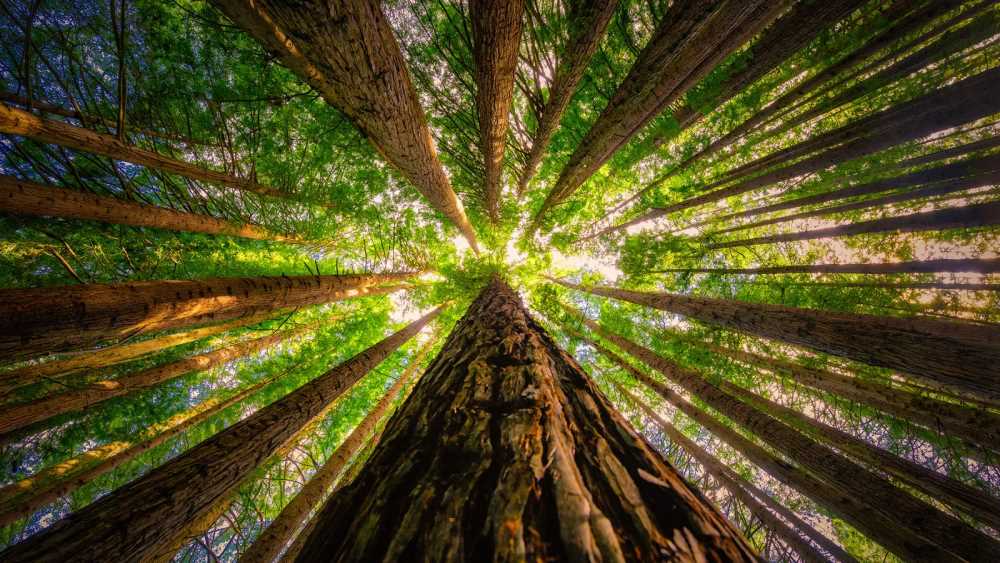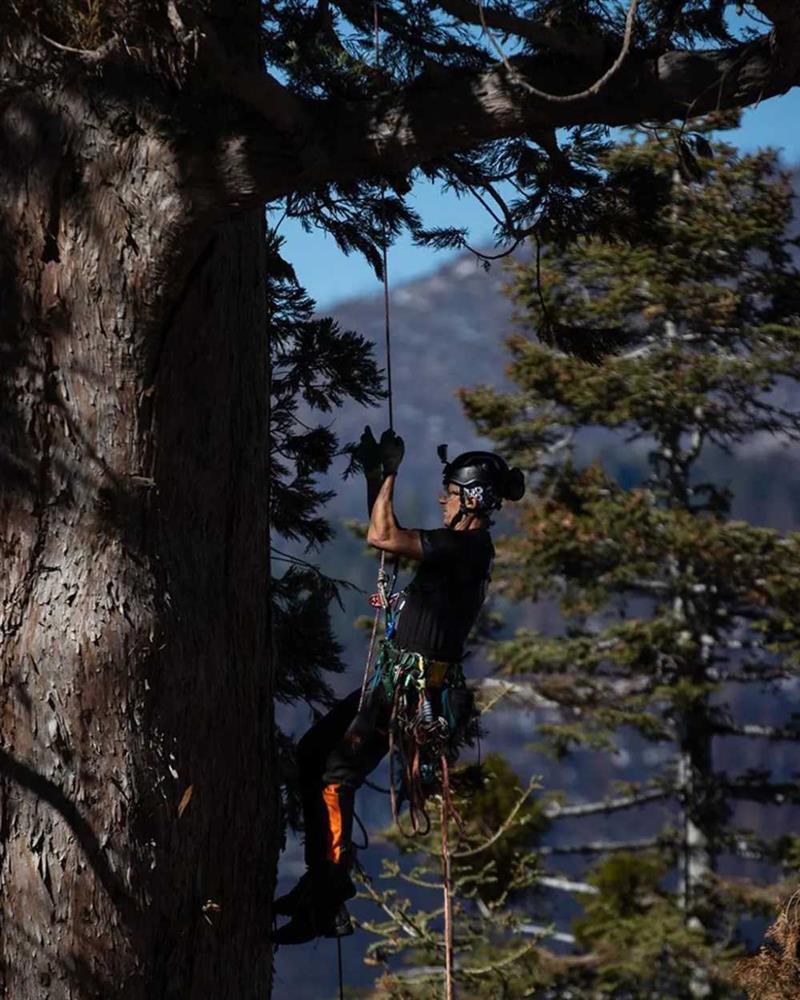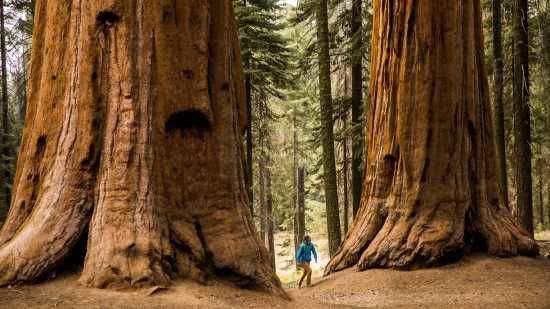The next year the number of dying trees grew exponentially. I felt powerless and grief-stricken as I saw these giant, sky-scraping trees fading all around me, realising there was nothing I could do to stop it.
While the native bugs were the proximate cause, the underlying reason for the unprecedented mortality in my home state and throughout the Rockies was that winters had stopped getting really cold. When I first moved to Montana in the late 1970s, temperatures of -34C (-30F) or even below -40C (-40F) were common in winter, sometimes for weeks at a time. The coldest temperature on record in Montana is –57C (-70F). These days wintertime minimum temperatures rarely get below -18C (0F) or so. If they do, it is usually just for a day or two. That's not nearly cold enough to kill pine beetles, which make their own natural antifreeze.
Within three years, more than 90% of my forest had died. We hired loggers to cut the trees down and truck them to a factory, where they were pulped and turned into cardboard.
Trees clean our water, affect our climate, provide wood for building and supply sources of food for us and many of the animals we eat
But it wasn't just here. Trees were dying all over Western North America. British Columbia lost 80% of its mature lodge pole pine in 2006 and 2007 and has gone from being a carbon sink to a carbon source. Trees have continued to die across the West; a few years ago 129 million trees died in California.
The experience of watching my forest die sparked in me a renewed interest in what was happening to trees, both in Montana and globally. I began a now two decade-long inquiry into the lives, and deaths, of trees and forests.
Trees clean our water, affect our climate, provide wood for building and supply sources of food for us and many of the animals we eat. They even, somehow, seem to be connected to the stars. Yet we know astonishingly little about their role in our world.
We also lack knowledge about the genetics of trees: especially the effects on the gene pool of cutting down virtually all of the biggest, most robust trees for lumber over many centuries. And we are also mainly in the dark about how those trees that have survived will fare in a hotter and drier world.
In the last few years, however, scientists have started to unpack the importance of ancient tree genetics, with mounting evidence showing they will play a critical role in the future of the Earth's forests. This research follows efforts by one group of tree enthusiasts to attempt to replicate and plant the largest of these giants to protect their ancient DNA in what they call "living libraries". It appears to be prescient.

Redwoods are one of North America's most iconic trees, but are also found elsewhere as in this forest planted in Victoria, Australia (Credit: James Yu/Getty)
Craig D Allen has been on forest death-watch for much of his career. He has been dubbed as a "tree coroner" due to his desire to understand how trees are dying from climate change. Despite recently retiring from the US Geological Survey, he is now busier than ever researching the crisis in the world's forests and serving as an adjunct professor of ecology at the University of New Mexico.
Years ago now, I walked with him through acre upon acre of dying pinyon pine forests on the sere landscapes around Santa Fe, killed by prolonged drought and heat. When I saw him again recently, he told me that forest die-off is accelerating globally.
Allen is one of a small group of researchers meticulously unpacking what climate change is doing globally to ancient forests – forests which are at least several centuries old, the ones we know and love, especially old growth forests. It's a complex subject, but Allen points to research results published in the past decade which to him sum up the egregious impacts of a warmer planet on these ecosystems.
The first of these, a 2012 paper co-authored by Allen, combined tree ring data, climate records and future climate projections in the south-west of the US. It found that future megadroughts caused by climate change could have a devastating impact on the forests of the region. The crux of the issue is that even as air temperatures rise linearly, the atmosphere's ability to hold water increases exponentially. This means that the atmosphere is growing thirstier at a breakneck pace, and droughts snatch an ever increasing amount of water from the soil, trees and other plants.
A second study published in 2012 by an Australian research team gathered data about the water columns – the routes that water takes within the tree from the roots to the crown – in hundreds of tree species. It found that hotter droughts are pulling water out of forests at an accelerating pace and in many places trees can no longer keep up with the stress of increased pumping, which causes something akin to an embolism.
The third is a 2015 study looking at the vulnerability of trees around the world to drought. "It says that every major forest type, from Arizona and Algeria to Alberta and Argentina, wet and dry, is dying in ways that are historically unusual, from heat and drought events," Allen tells me.
The bottom line is that hot droughts, which are becoming more frequent and hotter, stress trees to the breaking point.

Rip Tompkins from the Archangel Ancient Tree Archive climbs a Giant Sequoia in Sequoia Crest, California (Credit: Ethan Swope)
Because the warming atmosphere can hold more precipitation, in places that are both warmer and wetter, some forests are doing extremely well, better than ever, say Allen and William Hammond, a plant ecophysiologist and global change ecologist at the University of Florida. But where there are hot droughts, they are dying in increasing numbers. "Extreme events kill trees," Allen says. "And the worse periods are getting worse." Unprecedented extreme events are being seen, such as the 49C (120F) reached in British Columbia this past summer.
The trees on the front line of this changing world are the ancient ones, many of them over 200ft (61m) or even 300ft (91m) tall.
"One of the reasons big old trees are at risk is they have a really high cost to continue survival: bigger bills to pay," says Hammond. They need more water, and more energy to pump this water to their crown. They can be done in by drought, or weakened so much that they fall prey to insects, disease or fire.
The 1% largest trees hold 50% of the carbon held in forests
More frequent hot droughts also means trees have less time to recover. "After a drought event has ended and the trees are well watered again, they have a chance to regrow and recover some of their damaged organs," says Anna Trugman, an assistant professor at the University of California in Santa Barbara, where she studies the effect of climate change on forests. "But if you get more frequent droughts, back to back, that can result in a longer term decline because they are not able to recover."
The big old trees are sitting ducks.
That's a problem because not only are they big and old and awe-inspiring, they are critical for storing carbon to keep the world from warming even faster. The 1% largest trees hold 50% of the carbon held in forests.
Next Part: Why the world's tallest trees are dying (Part 2 of 2)











